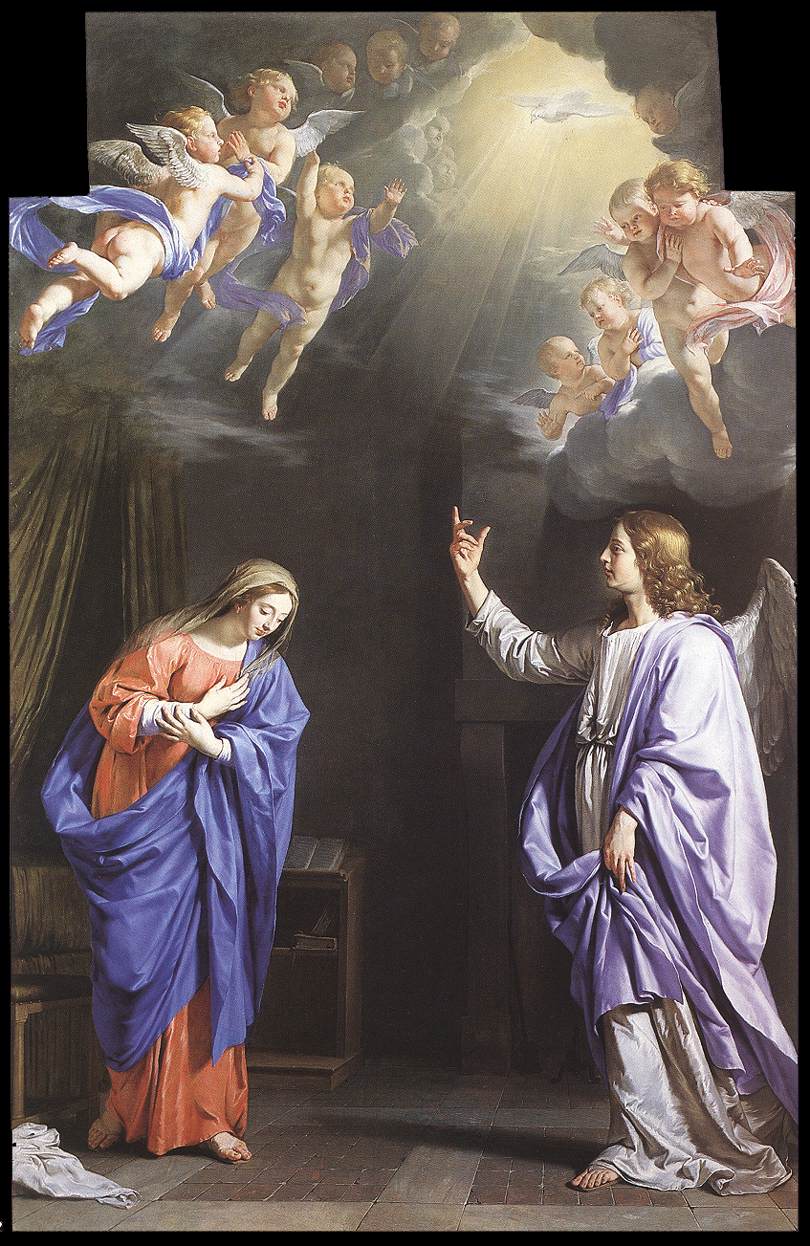Having returned to London recently I had the joy of visiting the Wallace Collection again. Please find below a few pieces which struck me and are absolutely worth talking about.
The Annunciation, Philippe de Champaigne French – ca. 1644
Now, I have already spoken about this in my Ferens Gallery post in Hull, but it is worth mentioning that this is possibly the painting which captivated me most out of all of the gallery. This is situated in the Great Gallery and had me in awe, as it did in Hull, for largely the same reasons.
The Acrobat, Barthélemy Prieur, ca. 1600
I remember from my first visit to the Wallace Collection how struck I was by this unusual sculpture. I had never before seen a sculpture where the depicted person or persons are not upright! Indeed, until Barthélemy Prieur, nobody else had either. Observe the musculature and the stretched skin around the arms. Observe the legs swinging to keep balance, there is wonderful depiction of motion here.
French sculptor Barthélemy Prieur was born in Berzieux (now in the Marne), into a family of farmers. He studied art in Italy and between 1564 and 1568 worked for the Duke of Savoie in Turin. On his return to France, he introduced Italian-style small bronzes into French art. His main output, though, consisted of large, bronze funerary monuments. His monument to Christophe de Thou is now in the Louvre, as is his monument to Anne de Montmorency. National Galleries
Polichinelle, Jean Louis Ernest Meissonier (1815–1891)
One of several whole-length figures of Punch by Meissonier, this was painted on a door panel in the Paris apartment of Apollonie Sabatier. The panel was cut from the door and retouched by the artist for the sale of Mme. Sabatier’s collection in 1861. The louche character of Punch was a not inappropriate decoration for the apartment of a celebrated courtesan.
I was amazed when I first saw this portrait. Look at the cheek in the facial expression, the delicate details in the hands and nails as well as the almost grotesque exaggerated stomach. I especially love the masterful depiction of felt in the trousers and the rich choice of colour. The shine on the clogs is also wonderful. this is such a delightful piece I would be at pains not to share it with you.
Miss Jane Bowles, Sir Joshua Reynolds (1723–1792)
Jane Bowles (1772–1812) was the eldest child of Oldfield Bowles of North Aston, an amateur painter of some distinction. When deciding which painter to employ to paint his daughter, Bowles invited Reynolds to dinner to see how he got on with his potential subject. According to Reynolds’s nineteenth-century biographer, Leslie: ‘the little girl was placed next to Sir Joshua at the dessert, where he amused her so much with stories and tricks that she thought him the most charming man in the world. Art UK
My final offering is this sweet rendition of a young Jane Bowles with her lovely dog, which looks from the colouring to be either a Border Collie or Spaniel puppy. From the hair, most likely closer to a Spaniel but I may be, and most likely am, wrong. Ms Bowles is sitting in a forest clearing, hugging her dog and looking pleased with herself. Every aspect of this portrait is so twee and delightful, charming even, that it drew my attention. Of course, you’ll know I’m a sucker for beautifully rendered fabrics, which are present here. But I especially love the detail of the dog’s right leg pressed against her as though Ms Bowles is squeezing too tightly. This is just exquisite to me.
So overall, not a bad collection at all. The Wallace Collection is filled with treasures and lest we forget, the building itself is magnificent and absolutely worth visiting. Whats more, it’s free. No excuses.





